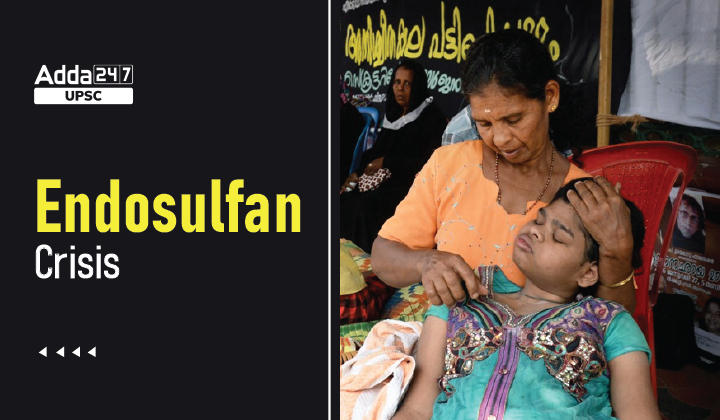Table of Contents
Endosulfan Crisis- Relevance for UPSC Exam
General Studies III- Conservation, environmental pollution and degradation, environmental impact assessment.
In News
The Supreme Court on Thursday directed the Kasargod District Legal Services Authority in Kerala to inspect the medical and palliative care facilities provided to endosulfan victims.
What is EndoSulfan?
- Endosulfan is an organochlorine insecticide which was first introduced in the first half of 20th century and is commonly known as Thiodan.
- It is usually sprayed on crops like cotton, cashew, fruits, tea, paddy, tobacco etc. for control of pests such as whiteflies, aphids, beetles, worms etc.
Impact of Endosulfan
- Endosulfan in the environment gets accumulated in food chains causing problems.
- Endosulfan in water absorbs to the sediment and may bioconcentrate in aquatic organisms.
- The Endosulfan ingestion results in such as physical deformities, cancer, birth disorders and damage to the brain and nervous system.
Ban on Endosulfan
- The Supreme Court in India has banned the manufacture, sale, use, and export of endosulfan throughout the country, citing its harmful health effects in 2015.
- Endosulfan is listed under both Rotterdam Convention on the Prior Informed Consent and the Stockholm Convention on Persistent Organic Pollutants.
Rotterdam convention 1998
- The convention aims to promote cooperation and responsibility sharing measures amongst different countries dealing with trade in hazardous chemicals and pesticides.
- PIC, Prior Informed Consent is the main feature of the convention and is legally binding on the party members.
- PIC facilitates information exchange about nature and trade-related information amongst the party members.
- The Convention creates obligations for the implementation of the Prior Informed Consent (PIC) procedure.
Stockholm convention 2001
- The convention aims to reduce the concentration of persistent organic pollutants (POPs) which are chemical substances that not only remain in the atmosphere for longer periods but also possess the ability to bio-accumulate.
- The convention listed 12 POPs as ‘dirty dozen’.




 TSPSC Group 1 Question Paper 2024, Downl...
TSPSC Group 1 Question Paper 2024, Downl...
 TSPSC Group 1 Answer key 2024 Out, Downl...
TSPSC Group 1 Answer key 2024 Out, Downl...
 UPSC Prelims 2024 Question Paper, Downlo...
UPSC Prelims 2024 Question Paper, Downlo...
